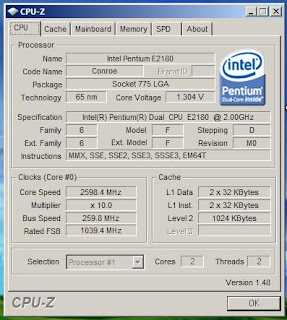I suppose it was time for a new heatsink / fan for my socket 775 systems. I have a couple of old socket 775 heatsinks / fans, but after using them the past several years the cheap plastic pins broke.
This past Thanksgiving I managed to find that NewEgg was selling the Rosewill RCX-Z300 92mm Ball CPU Cooler for only $14.99 with free shipping. I'm glad I ordered it then because a day later, the price went to $19.99 + shipping. It was pretty much the cheapest 775 heatsink / fan I could find that had a 4 pin connector so that my BIOS could automatically adjust the fan speed, while at the same time actually looked like a quality product.
I'm always hesitant when purchasing heatsinks / fans for computers because frankly they seem to be so overpriced. Ten years ago, I could get a cooler from my local Radio Shack for $8. Even two years ago I could order a variety of heatsink / fans from Newegg for under $10 shipped. I really don't even know why I bothered paying $15 for a heatsink, when I could have purchased a 2.0 ghz AMD Sempron CPU in retail packaging (comes with cooler) for a mere $5 more ($20 total) [yes I am aware that Socket AM2 heatsinks are incompatible with Socket 775 for the most part.]. Now I understand the fact that the Rosewill heatsink is much better than any OEM heatsink, but its not like I am using any CPUs that require aftermarket heatsinks.
Anyhow, back to the Rosewill RCX-z300. The unit was shipped to me very quickly via UPS, and upon arrival I noticed that the heatsink had some weight to it. I put it on a postal scale and found that the unit weighed 15 ounces. The heatsink / fan it was replacing only weighed 10 ounces. The additional weight compared to the original heatsink is due to the copper core in the Rosewill fan (which is also probably the reason why coolers have gone up in price).
The RCX-z300 is just a simple traditional looking heatsink / fan. It doesn't use any weird block designs, or weird mounting brackets. It's simple, and I like that. The most sophisticated thing about this heatsink is the fact that the fan blades are red and there is a "Z" sticker on top of the fan. I don't need a four pound block of copper with several fans that look like helicopter blades to cool my processor.
The heatsink is already applied with thermal grease. Lots of people like to use their own thermal grease, but I just left the grease on. Installing the heatsink was a little tricky because Rosewill chose to use that annoying plastic screwdown method that Intel invented. I had some problems getting all four of the plastic screws to clamp down, but I always have trouble with any fan that uses the plastic screws. It would have been much easier if Rosewill would have included a back plate and used metal pins for installation. If they would have choose the metal plate / pin method, I know that I would have a great heatsink that I could use on different systems for many years.
The fan can spin upto 2200 RPM, and because of its four pin connector, can be controlled by the BIOS. With the speed control off, the fan was relatively quiet as it spun at 2150 RPMs. When I adjusted my system bios and turned the fan control on, SpeedFan reported that the fan was running at 70%, and 1250 RPM. The fan was much softer than the constant 3,000 RPM fan it replaced. I can hardly hear the Rosewill fan spinning with case open, and with the case close, I can not hear it at all (My system is not completely silent, the power supply's fan makes a slight hum).
As mentioned in the beginning, I used to have a generic heatsink that was not properly attached to the motherboard, had a fan running at 3,000+ RPMs constantly, and the case was open. The temperature in the case was 32 C and would steadily increase as I used the computer. (The room temperature is a constant 21 c) The Rosewill heatsink / fan allows my overclocked E2180 running at 2.6ghz to remain around 30 c all day, and the fan never runs above 1250 RPM.
Overall, the Rosewill RCX-Z300 92mm Ball CPU Cooler is an excellent budget heatsink / fan for anybody that needs a new Socket 775 fan. It's a simple design that works, and will fit on all 775 motherboards, and in most computer cases. The only complaint I have is the whole plastic screw ordeal, but with the price paid I really can't complain.
Rosewill has yet to let me down on any of their products. You can purchase the osewill RCX-Z300 92mm Ball CPU Cooler
here.












